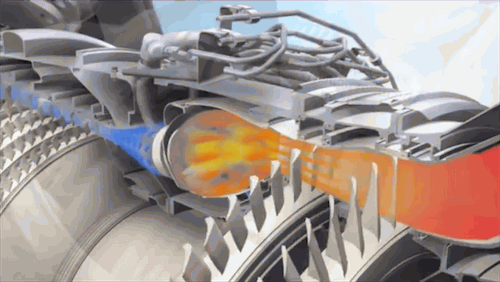GE Aviation has revealed the biggest commercial jet engine in the world.
The GE9X engine is a massive 11 feet (3.35m) in diameter, which puts it in the record books. The engine went on display at GE Aviation’s test facility in Peebles, Ohio, in time for an industry boot camp. Of course this is a landmark powerplant and every new engine is a showcase for GE technology, too.
So the sheer size might have grabbed the headlines, but there are far more impressive things going on under the skin.
This engine will power the next generation Boeing 777X and it’s a development of the powerplant that powers the 787 Dreamliner. It has spent four years in development and features a vast number of new materials, including titanium alloys.

Thrusting into the future
The end result is an engine that can generate 100,000 pounds of thrust and that has attracted more than $29 billion of orders from Emirates, Lufthansa, Cathay Pacific, Etihad Airways and Qatar Airways.
3D printing features heavily in the design and has allowed the engineers to redesign certain aspects of the engine completely. The titanium-edged Ceramic Matrix Composite (CMC) blades in the turbine come with a structure that you just could not achieve with old-school production methods. GE is the first company to use them in a large commercial engine and this revolutionary material allows for a lightweight, heat resistant and strong final result.

Of course they’re designed purely for function, but the finishing aesthetic is so dramatic that one of these blades sits in the New York Museum of Modern Art.
Fuel consumption is key
This material is safe up to and beyond temperatures of 2,400 degrees Farenheit, which allows the engine to run hotter. That means it can run leaner, which leads to reduced fuel consumption. With a global fleet all burning less fuel, that has a serious impact on air travel’s carbon footprint and the costs.
The engine features fourth-generation carbon-fiber fan blades that are strong, but lightweight. This means they can spin faster and create more pressure to force feed the 11-stage compressor. The final pressure ratio, which is the headline figure, is 27:1. That is the highest figure for any commercial engine.
The details are truly impressive
The engineers are particularly proud of some of the details, like the 3D printed fuel nozzles that have come in for a complete rethink since the company embraced additive printing.

Their shape is critical when it comes to the fuel flow and 3D printing has enabled the engineers to run advanced modelling and perfect the components. They’re also produced from one piece now, rather than 20 separate components.
Of course the static operation Peebles Testing Operation was no simple task and GE Aviation invested $10 million to prepare the site, including producing a special ‘bellmouth inlet duct’. That’s a huge funnel, 18 feet across and 12 feet deep, that was grafted to the front of the engine to assist airflow.
Engineers also included a fourth fuel tank, reinforced the engine stand that was already at the centre and shielded it from the high temperatures.
That was just the start. “We also upgraded our engine hoists and transporters to handle the GE9X and modified a wall in our prep building so the engine can be moved after final assembly to make its way to the test stand” said Brian DeBruin, plant manager for GE Aviation’s Peebles Test Operation.
The first tests took place in March and now the GE9X will go through an extensive programme before entering service by the end of the decade. It’s a crowning moment for the company that produced the first ever production jet engine in 1942.
The world of aviation has embraced 3D printing and new materials, which have opened up exciting avenues that we could only dream of a few years ago. It’s a glimpse into the future, and the future looks good.



